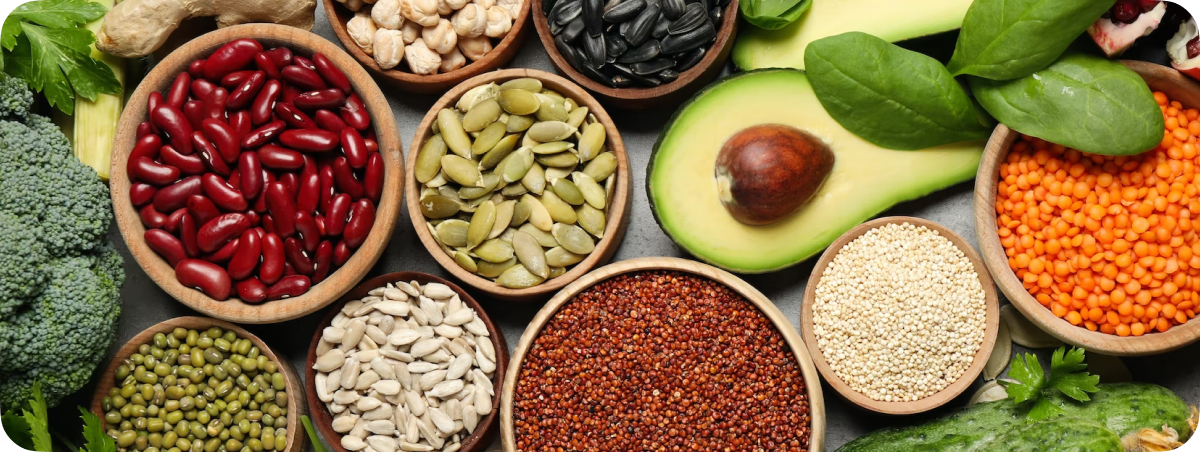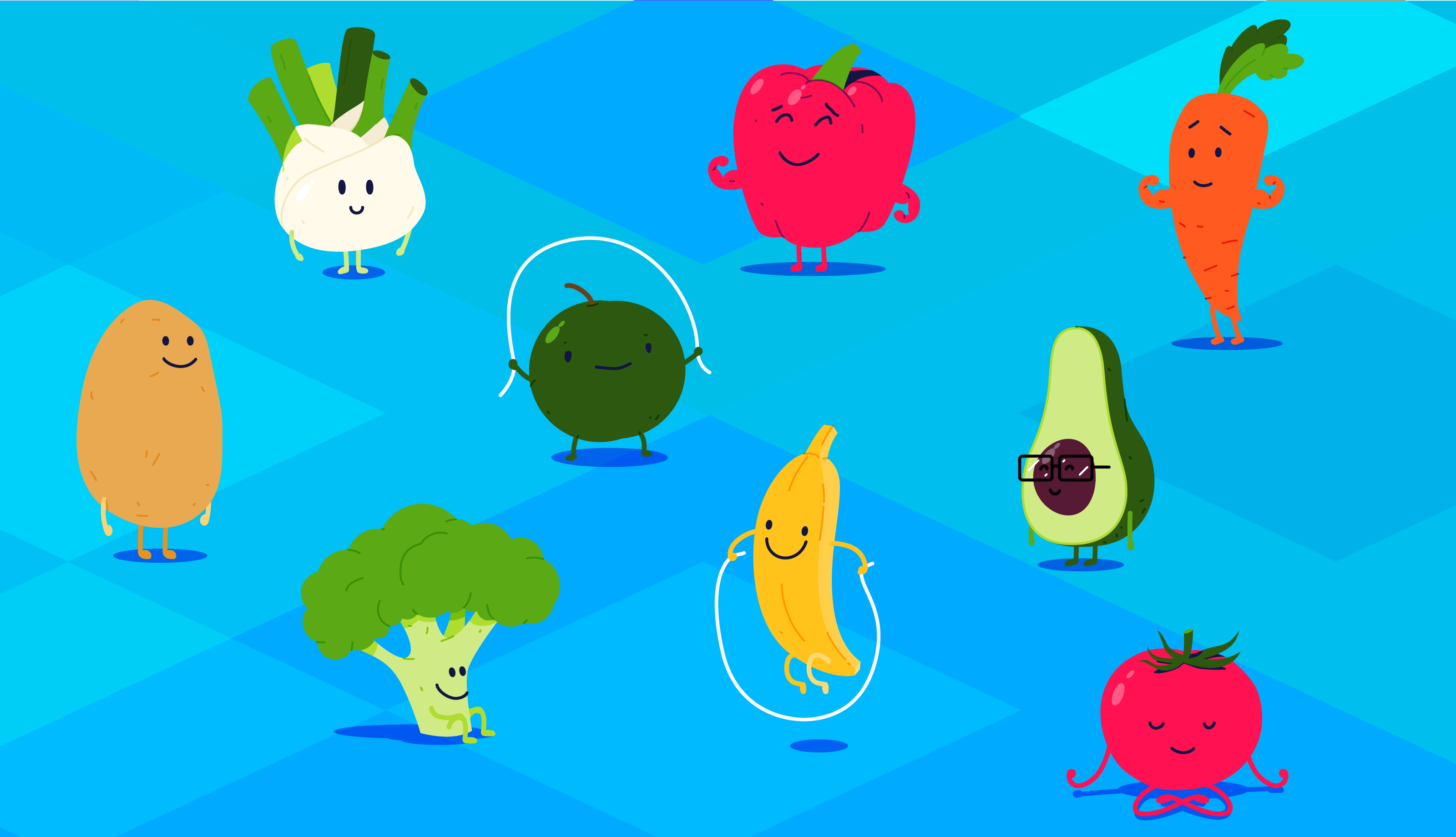The raw food diet has been gaining popularity in recent years, gaining a reputation for being a healthier way to eat. Raw food diets consist of food that is not cooked, heated above 116°F (47°C), processed, or refined. Proponents of the diet argue that it retains more of the natural enzymes, vitamins, and minerals found in foods, which are often destroyed or altered during cooking or processing.
Raw food diets consist mainly of fresh fruits and vegetables, nuts and seeds, sprouts, and seaweeds. It is important to note, however, that a raw food diet may not provide enough protein, calcium, or essential fatty acids to meet the body's needs.
It is also widely believed that the raw food diet affects the gut microbiota, or the balance of bacteria in the digestive system. This balance has a major impact on digestive health, immune health, and even mental health. In this blog post, we'll discuss the potential effects of a raw food diet on the gut microbiota, as well as the pros and cons of this type of diet.
What is the Raw Food Diet and its Benefits

The raw food diet is a type of diet that emphasizes the consumption of uncooked, unprocessed, and often organic foods. It includes fresh fruits, vegetables, nuts, seeds, and sprouted grains and legumes. The diet excludes animal products (including dairy, eggs, and honey), as well as any foods that have been processed, heated, or cooked above 115 degrees Fahrenheit.
Proponents of the raw food diet argue that cooking food destroys important enzymes and other nutrients, and that consuming raw foods is the best way to obtain maximum nutrition. Additionally, many argue that uncooked foods are more “alive” and thus more nourishing. They also believe that the raw food diet can help reduce inflammation and improve overall health.
The raw food diet can provide a good source of many important nutrients including vitamins, minerals, antioxidants, fiber, and omega-3 fatty acids. Additionally, many types of raw foods are considered to be alkaline-forming and thus can help balance the body’s pH. Eating raw foods may also help improve digestion and the absorption of nutrients.
For those who are interested in trying the raw food diet, it is important to note that it can be difficult to get enough calories and nutrients. It may also be difficult to find or prepare enough variety of foods to ensure adequate nutrition. It is also important to make sure to include sources of healthy fats and proteins, as these are especially important for those on a plant
Exploring the Benefits of Eating Raw Foods
The effects of the raw food diet on the gut microbiota have not been extensively studied. However, some research suggests that consuming mostly or all raw foods can have a beneficial impact on the gut microbiota.
One study found that participants who consumed a raw food diet for seven days showed a significant increase in beneficial bacteria, such as Bifidobacterium, when compared with their baseline levels. Additionally, the levels of Bifidobacterium remained elevated even after the participants stopped the raw food diet. Other studies have also found that a raw food diet can help increase beneficial bacteria and reduce pathogenic bacteria.
The raw food diet may also help improve digestive health. One study found that participants who switched to a raw food diet had improved digestion, reduced bloating, and increased energy levels. Additionally, the participants reported that their stomachs felt “lighter” and their hair and nails looked shinier.
Overall, the raw food diet may have some positive effects on the gut microbiota, as well as on digestive health. However, it is important to talk to a doctor before making any major changes to your diet, as the raw food diet may not provide enough protein, calcium, or essential fatty acids to meet the body's needs.
Get the Most Nutrients from Raw Food Diet

Eating a raw food diet can provide many health benefits, including improved digestion and absorption of nutrients. However, it is important to make sure you are getting enough of the essential nutrients that your body needs. Here are some tips on how to get the most out of a raw food diet:
1. Choose a variety of raw foods. Eating a variety of raw foods can help ensure that you are getting all the essential nutrients. Aim to include different types of fruits, veggies, nuts, seeds, and sprouts in your diet.
2. Consider adding supplements. If you are having trouble getting all the essential nutrients from raw food alone, consider taking a multivitamin or supplement to make sure you are getting enough.
3. Incorporate fermented foods. Fermented foods, such as sauerkraut and kimchi, are an excellent source of beneficial bacteria and probiotics. These foods can help improve digestive health and balance the gut microbiota.
4. Add healthy fats. Eating healthy fats, such as avocados, nuts, and seeds, can help keep you full and provide essential fatty acids.
5. Monitor your energy levels. If you find that you are feeling sluggish or fatigued, you may want to consider adding more healthy fats and proteins to your diet.
Eating a raw food diet can be a great way to get the nutrients your body needs. However, it is important to make sure you are getting
How to Start a Raw Food Diet
Switching to a raw food diet can be a great way to improve your health and get the nutrients your body needs. But starting a raw food diet can be daunting. Here are some tips on how to get started:
1. Educate yourself. It’s important to understand what a raw food diet entails and learn about the different types of foods that should be included. Doing some research can help you plan your meals and ensure that your diet is balanced and nutrient-rich.
2. Making the switch to a raw food diet can be overwhelming, so it’s best to take it slow. Start by gradually increasing the number of raw foods in your diet and slowly adjust to the new eating habits.
3. Buy the right equipment. To help you prepare raw food meals, you’ll need to buy some specialized kitchen equipment, such as a food processor or a blender. Investing in quality tools can make the process of eating raw much easier.
4. Experiment with recipes. There are a lot of delicious raw food recipes available online. Try out different meals and find recipes that you enjoy. This will help you to stick to your diet and ensure that you are getting enough nutrients.
5. Get support. A raw food diet can be difficult to stick to, so it’s important to find support. Look for online forums or communities to connect with other people who are interested in raw food.
The Pros and Cons of the Raw Food Diet

The raw food diet is becoming increasingly popular among those looking for a healthier way of eating. The diet consists of consuming only unprocessed, uncooked, and organic foods that have not been heated over 115 degrees Fahrenheit. While this type of diet is said to offer many health benefits, it also comes with some potential drawbacks. In this post, we’ll take a look at the pros and cons of the raw food diet.
The Pros:
1. Higher Nutrient Content: Raw foods contain more vitamins, minerals, and enzymes than cooked foods. This means that you’ll get more of the nutrition your body needs when following a raw food diet.
2. Improved Digestion: Cooking can damage the enzymes in food, making them harder to digest. Eating raw food makes it easier on your digestive system.
3. Weight Loss: Eating raw foods can help you lose weight because it’s generally lower in calories and fat than heavily processed foods.
The Cons:
1. Higher Food Costs: Organic and raw foods can be expensive. If you’re on a budget, eating a 100% raw food diet may be difficult to maintain.
2. Dietary Restrictions: Eating only raw foods can lead to dietary deficiencies if not done correctly. It’s important to make sure you’re getting enough protein, calcium, and other essential nutrients.
3. Time-Consuming: Preparing raw foods can be time-consuming, as you need to clean and cut ingredients before
Notes
-
Raw Food - eating only foods that have not been heat-treated. The diet can include not only fruit and vegetables, but also raw, cured or dried meat and fish, raw eggs and unpasteurised dairy products.
-
Raw foodists eat a lot of vegetables and fruits, and also do not eat fatty, salty and sweet foods. This has a positive effect on a person's weight, the state of his cardiovascular system, cholesterol levels and blood pressure.
The consumption of raw food is associated with certain risks: it can be a source of contamination with dangerous bacteria and parasites. -
A raw food diet changes the composition of the microbiota. The long-term effects on the body are still unknown, but it is clear that not only the number of different species of bacteria can change, but also how their genes work and metabolism changes.

- WebMD, Raw Foods Diet, 2021
- Cleveland Clinic, Raw Food Diet: Is It Healthier? 2021
- Nature Microbiology, Cooking shapes the structure and function of the gut microbiome, 2019
- New Zealand Veterinary Journal, The effects of raw-meat diets on the gastrointestinal microbiota of the cat and dog: a review, 2022
- Medical News Today, What is the impact of cooked vs. raw food on the gut? 2019
















